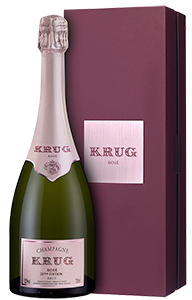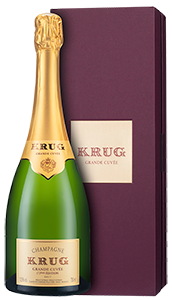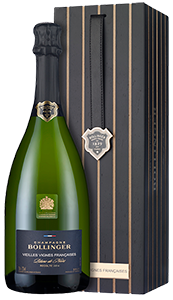Filter by
- An exquisite Premier Cru Champagne from prized Cuis vineyardsfrom £75.00 per bottle
- An exquisite Grand Cru Champagne awarded 95 points by James Sucklingfrom £95.00 per bottle
- from £105.00 per bottle
- £1400.00 first instalment
- £650.00 per bottle
- £925.00 first instalment
- £945.00 first instalment
- £525.00 per bottle
- £950.00 first instalment
- from £780.00 per bottleSAVE UP TO £445.00
- Reserve this wine£595.00 first instalment
- £1400.00 per bottleSAVE £400.00
Wine FAQs
What is French sparkling wine?
There’s nothing quite like the pop of a bottle of Champagne to bring a sense of ceremony to any occasion – or just brighten up an ordinary day. Yet French sparkling wine skills aren’t limited to the bubbly wines from the Champagne region of France. In fact, there are several French sparkling wines to explore, including Blanquette de Limoux, Crémant and Clairette de Die.
French sparkling wines are not exclusively white, either. France produces a variety of sparkling rosé wines. Regions like Champagne, Loire and Alsace are renowned for their rosé sparklers, often made from grape varieties like Pinot Noir, Meunier and sometimes a blend of white and red grapes.
How is French sparkling wine made?
French sparkling wine, including the world-famous Champagne, is typically produced using a method called “Méthode Traditionnelle” (Traditional Method), sometimes known as “Méthode Champenoise.”
Here’s a simplified overview of the process:
- The first step is to create a still wine. This is typically done with a blend of wines from various grape varieties and possibly different vintages.
- Once the base wine is prepared, it is mixed with a liqueur de tirage – a solution of wine, sugar and yeast. This mixture is then bottled and sealed with a crown cap.
- A second fermentation then takes place, where the sugar and yeast in the liqueur de tirage start a second fermentation in the bottle, producing more alcohol and carbon dioxide. Since the gas cannot escape, it dissolves into the wine, creating the bubbles that sparkling wine is known for.
- The wine is aged on its lees (dead yeast cells) in the bottle. This ageing process contributes to the flavour and complexity of the sparkling wine.
- After ageing, the bottles are gradually tilted and rotated in a process called riddling to collect the lees in the neck of the bottle.
- The bottle neck is then frozen, and the bottle is opened to let out the plug of lees, in a process called disgorging.
- After disgorging, a dosage (a mixture of wine and sugar syrup) is added to adjust the sweetness of the final wine.
- Finally, the bottle is sealed with a cork and secured with a wire cage.
What types of French sparkling wine are available?
France has a rich history of producing some of the world’s best sparkling wines.
- Champagne – Arguably the world’s most famous sparkling wine, Champagne comes from the region of the same name in northeastern France. It’s important to note that only sparkling wines made in the Champagne region can be labelled as Champagne. This sparkler is primarily made from Chardonnay, Pinot Noir and Meunier grapes. Champagne is known for its high acidity and complex flavours of citrus, apple, pear, brioche and chalky minerality. It also has fine, persistent bubbles that help to uplift those light, juicy aromas.
- Crémant – This term refers to sparkling wines made outside the Champagne, in regions such as Alsace, Loire and Burgundy. Crémant from different region have distinct styles. For example, Crémant d’Alsace is made with Pinot Blanc and has soft, fresh fruit flavours, while Crémant de Bourgogne, which is mostly made from Chardonnay and Pinot Noir, has similar characteristics and flavours to Champagne.
- Blanquette de Limoux – This sparkling white wine from the Limoux area of southern France is said to be one of the oldest recorded sparkling wines in the world, with production dating back to the 16th century. Made primarily from native Mauzac grapes, Blanquette de Limoux has a more rustic style than Champagne and Crémant, with apple flavours and a hint of earthiness.
- Clairette de Die – Clairette de Die is a sweet, lightly sparkling wine from the Rhône Valley. Made primarily from Muscat Blanc and Clairette grapes, it’s known for its summery floral and peachy notes.
Where is French sparkling wine made?
Several regions in France produce outstanding sparkling wines, each with its own characteristics. The major regions are:
- Champagne – Located in northeastern France, its cool climate and chalk-rich soil provide the ideal location for growing Chardonnay, Pinot Noir and Meunier. Together in a blend, they create one of the world’s most elegant, complex and prized sparkling wines.
- Alsace – Nestled between Champagne and France’s German border is Alsace. This region shares a similar climate and soil type as Champagne but is home to the fresh and fruity Crémant d’Alsace instead. This region also grows Chardonnay and Pinot Noir, which share vineyards with Riesling and Pinot Blanc varieties.
- Loire Valley –This central French region is best known for Crémant de Loire. This creamy sparkler is made from a blend of Chenin Blanc, Chardonnay and Cabernet Franc. The region’s diverse soils and relatively cool climate add to Crémant de Loire’s high, bright acidity and notes of white blossom, white fruits and almonds.
- Burgundy (Bourgogne) – Located in eastern France, Burgundy is known for Crémant de Bourgogne. This sparkling wine uses the same grape varieties as Champagne – Chardonnay, Pinot Noir, with the addition of Aligoté. The region’s varied soils and semi-continental climate create rich, complex sparkling wines.
- Rhône Valley – In the southeastern part of France is the renowned Rhône Valley wine region, home to Clairette de Die – a sweet, fragrant sparkling wine made from a blend of Muscat Blanc and Clairette, a native French variety. These wines are sometimes labelled as Crémant de Die.
- Limoux – Located in the Languedoc region in southern France, Limoux is said to be the birthplace of sparkling wine. The region produces Blanquette de Limoux and Crémant de Limoux, made from Mauzac and Chardonnay. The Mediterranean climate and clay-limestone soils help produce crisp, aromatic sparkling wines.
What food does French sparkling wine pair with?
Champagne is incredibly versatile and pairs well with many dishes. Its high acidity and effervescence make it an excellent match for seafood, especially oysters, cream-based dishes, canapés and light starters, and even fried foods due to its ability to cleanse the palate.
Crémant shares Champagne’s acidity and freshness, so it works wonderfully alongside rich seafood pasta, quiche or grilled chicken.
Rosé sparkling wine and charcuterie are a good pairing, as the acidity and bubbles in the wine balance the fat and salt in the meats. The sweet-and-sour or spicy flavours in many Thai, Chinese or Indian dishes can also be balanced by a fruity sparkling rosé.
Slightly sweeter French sparkling wines like Blanquette de Limoux and Clairette de Die have a wide range of delicious food pairings. Blanquette de Limoux’s off-dry style pairs perfectly with spicy Thai dishes, grilled seafood and desserts such as tarte tatin. Clairette de Die is a delightful way to end a meal when served with spiced nuts, blue cheeses, foie gras and fruit desserts.
How to serve French sparkling wine
French sparkling wines are best served chilled. Champagne and Crémant are at their best when served between 6-10°C, but sweeter styles (Blanquette de Limoux and Clairette de Die) can be served at a lower temperature to balance their sweetness – between 5-7°C.
Serve your sparkling wine in a slim flute glass. However, more aromatic French sparkling wines may benefit from being served in a coupé or tulip glass.
To store an opened bottle of sparkling wine, reseal it with a sparkling wine stopper, and pop it in the fridge. The bubbles should last up to three days, after which the wine may become flat and its flavours muted.














